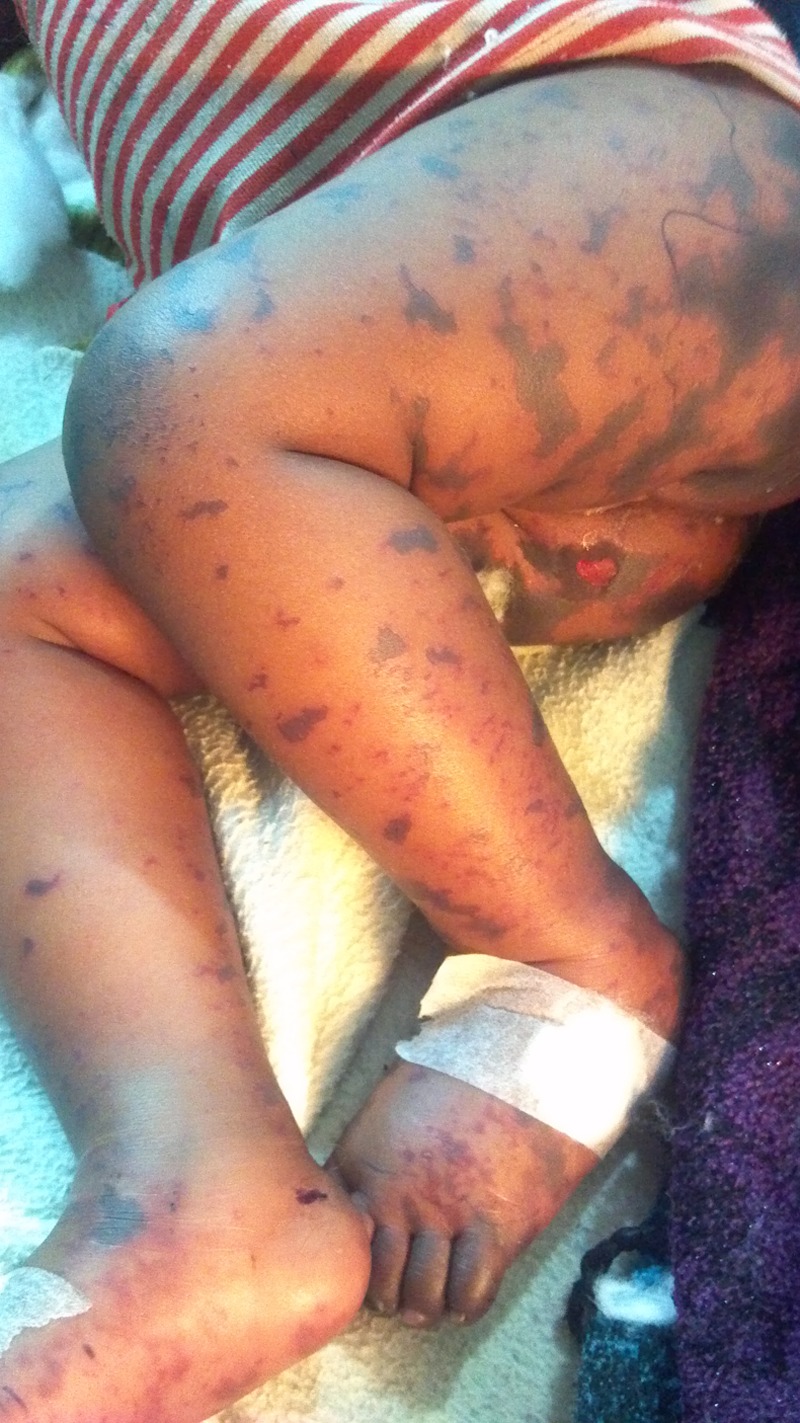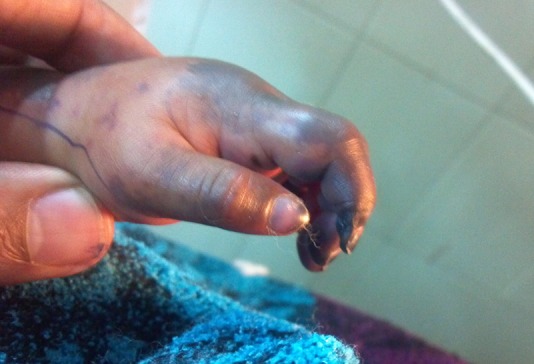Description
A 6-month-old infant presented with a 2-day history of fever, irritability and rashes. On examination, she was febrile, hypotensive and had a purpuric rash covering the face, trunk and extremities along with symmetrical black discolouration of fingers and toes of all limbs (figure 1). Investigations revealed leukocytosis, thrombocytopaenia and a prolonged prothrombin time; lumbar puncture was normal. Scrapings from the rash showed Gram-negative cocci in pairs. The child was not immunised against any strain of meningococcus.
Figure 1.

Purpuric rash involving the legs bilaterally with areas of sloughed off skin.
She was treated with intravenous fluids, inotropes, ceftrixone and hydrocortisone. Her blood culture showed growth of Neisseria meningitidis sensitive to ceftriaxone and flouroquinolones. The patient became stable after 3 days of treatment and fever subsided. However, some of the skin lesions sloughed off leaving raw exposed skin; the discolouration of fingers progressed to gangrene (figure 2) and eventually auto amputation of three fingers and two toes occurred.
Figure 2.

Gangrene involving the fingers.
Acute infectious purpura fulminans occurs in the setting of overwhelming sepsis caused commonly by meningococcus and Staphylococcus aureus. The primary features of this syndrome are large purpuric skin lesions, fever, hypotension and disseminated intravascular coagulation.1 Management includes antibiotic therapy as well as supportive measures that include aggressive fluid resuscitation, inotropic support and replacement of deficient blood components. Protein C can be given if deficient, however, its use may increase the risk of intracranial haemorrhage in patients with meningitis.2 Early use of heparin and intravenous immunoglobulins has also shown to be beneficial in some cases.3
Learning points.
Purpura fulminans is a rare but serious complication of meningococcemia.
Early diagnosis and aggressive management is needed to prevent serious long-term sequelae.
Use of protein C may increase the risk of intracranial haemorrhage.
Footnotes
Contributors: AA was the paediatrician responsible for the care of the patient and wrote the manuscript. AAM collected the images and critically reveiwed the manuscript.
Competing interests: None.
Patient consent: Obtained.
Provenance and peer review: Not commissioned; externally peer reviewed.
References
- 1.Chalmers E, Cooper P, Forman K, et al. Purpura fulminans: recognition, diagnosis and management. Arch Dis Child 2011;96:1066–71 [DOI] [PubMed] [Google Scholar]
- 2.Smith OP, White B. Infectious purpura fulminans: caution needed in the use of protein C. Br J Haematol 1999;2013:253–4 [DOI] [PubMed] [Google Scholar]
- 3.Kaul R, McGeer A, Norrby-Teglund Aet al. Intravenous immunoglobulin therapy for streptococcal toxic shock syndrome—a comparative observational study. The Canadian Streptococcal Study Group. Clin Infect Dis 1999;2013:800–7 [DOI] [PubMed] [Google Scholar]


